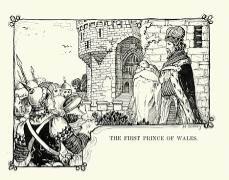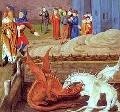Дидактичний матеріал "Wales "в 8 класі.
Wales (legends and traditions)
A reading worksheet to get acquainted with Welsh legends, customs and traditions.It includes the comprehension exercises in which students have to answer the questions and complete the sentences.
|
Lamb is a popular dish because there are many sheep in Wales.
|
|
The king showed them his newborn son and called him Edward, the Prince of Wales. |
|
|
|
|
|
The red dragon defeated the white dragon. That’s why the Red dragon became the symbol of Wales. |
|
|
|
According to the other legend David studied with a blind monk who wanted to see the beautiful daffodils that bloomed in the monastery in spring.
He prayed to God and heard a voice telling him to allow David to touch his eyes. David touched and his friend got his sight. |
|
|
Wales is called the Land of Songs. The Welsh people like to sing, they are proud of their good voices and it is difficult to find a village where there is not a choir. |
|
|
|
|
|
|
Answer the questions: 1. What does the Welsh name of Wales mean? 2. Why does the eldest son of British monarch get the title “Prince of Wales”? 3. Why did the Red dragon become the symbol of Wales? 4. Why does Wales have two national symbols - the leek and the daffodil? 5. Why is Wales called the Land of Songs? 6. What is Eisteddfod? |
Complete the sentences: 1. The winners of Eisteddfod are awarded with … 2. A very popular place for spending holidays in Wales is … 3. Traditionally love sweetheart gets a … 4. A favourite Welsh sport is … 5. Wales is famous for … 6. The names of some Welsh towns mean … |


про публікацію авторської розробки
Додати розробку


















